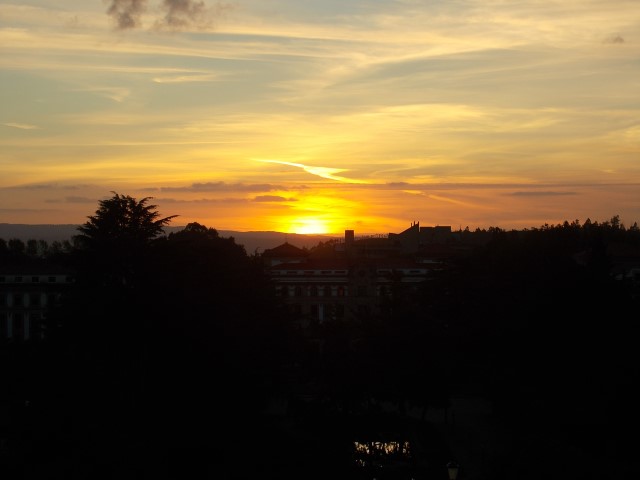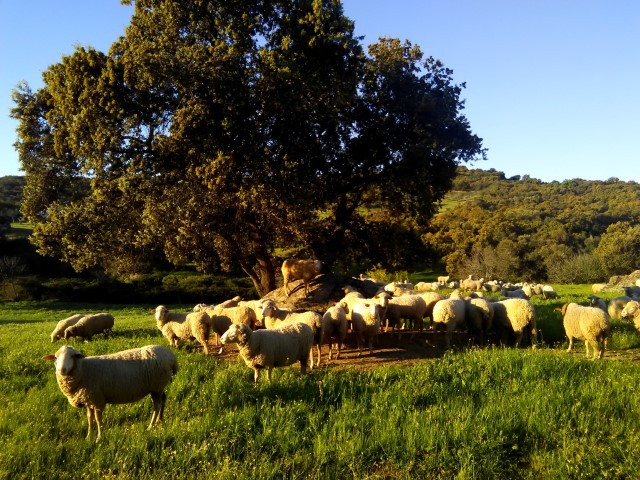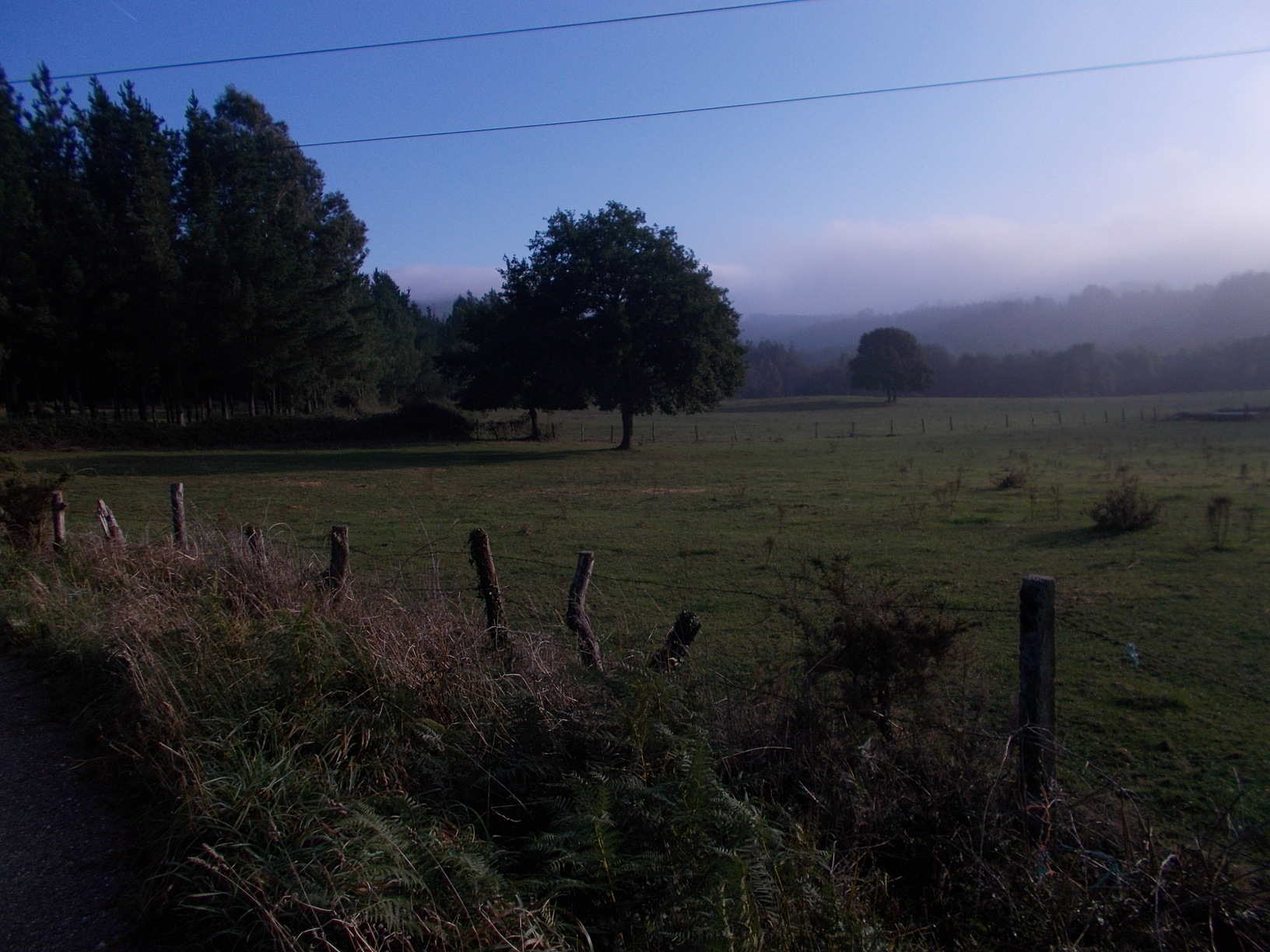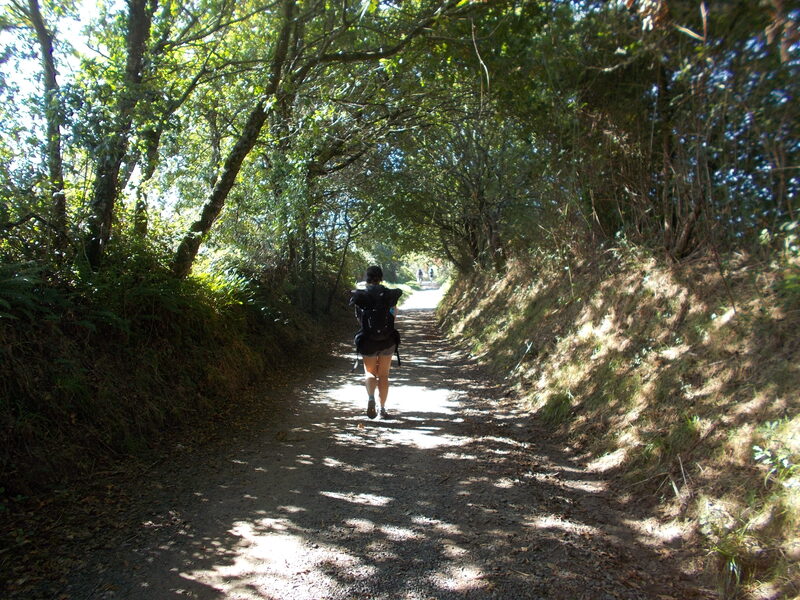In a certain way walking the Camino is no different to pursuing any other big goal in life. As Benjamin Franklin famously said: “If you fail to plan, you plan to fail.” Sure enough, if you’ve walked five long distance hiking trails before in life, and run fifty miles a week on trails in your neighborhood, no special planning is necessary. You can just pack the stuff and go, simply because the past years have prepared you for the experience. For 90% of pilgrims in Spain, however, this is not the case. Camino is often the journey of a lifetime, or at least the longest hiking endeavor you’ve ever attempted. And in such a case, planning makes a lot of sense…
What should you plan though? Well, a few things. The number of kilometers you want to walk every day or places where you want to sleep is just one part of the puzzle. In my opinion and personal experience (witnessing unlikely candidates to reach Santiago, and fit pilgrims fail to do so), you should focus on the following three areas in your planning:
- Training before the Camino. If you always drive everywhere or never walk uphill, if you have some extra pounds you’d like to shed or your back sometimes bothers you (if not daily), it is pivotal to get (at least) a bit in shape before you fly to Spain, or at least get your body accustomed to walking with a backpack (we’ll analyze this part of a plan in a second).
- Equipment. I could tell you countless stories about pilgrims failing to reach Santiago just because they had a wrong backpack (bad fit), or because they walked in shoes that just weren’t fitting for the Camino, or they were one of the people who really should walk with hiking sticks, but they didn’t. Planning your gear properly can make tons of difference on a long pilgrimage (check our ultralight packing list for some inspiration).
- Logistics on the way. That means where approximately you want to walk daily, how many miles you want to cover in average, where you want to sleep etc. I want to emphasize that though it makes a lot of sense to have a general plan in mind, you should leave room for improvising here, since you never know what happens on the way (you have a bad blister, rain pours down all day, etc). We’ll talk about this in a while as well.
Let’s analyze each part of planning for walking the Camino in more detail.
Table of Contents
Planning your training before walking the Camino
You can approach this part of planning as you’d approach planning for running a marathon for example. That means you should start at least eight weeks before the day you plan to start walking the Camino. For each week you should set certain exercises that will help you get ready for the walk. As it is the case with any other similar endeavor, you should keep on your mind the three principles of training:
- Continuity (that means persistently doping your training for the Camino week after week).
- Progressiveness (you shouldn’t start with 15 miles walks from the first week, but progressively prolong the distance and difficulty, as well as the weekly mileage).
- Meaning (it is great if you love to swim, but swimming two hours a day isn’t exactly a preparation for 500 miles of walking over Spain).

– Sunset in Santiago de Compostela. Seeing this after completing a long pilgrimage is a feeling that’s hard to beat… In order to experience it, however, you’ll need to plan and prepare for your Camino.
A good training plan for walking the Camino is no rocket science
At the end of the day, we should not over-complicate things. You will walk in Spain, and hence your training back home should consist primarily in walking. With or without a backpack, on asphalt and also in terrain (since you’ll walk on both in Spain). Let me give you an idea of an eight week training plan for the Camino (Camino Frances in particular, but you can apply a similar training plan for any other long Camino in Spain). The plan is intended for complete beginners, that means people who barely walk anywhere in their normal daily life.
- Week one: Do three walks of 3-5 miles without a backpack. You can walk in a park, forest, or just around your block. No need to carry a backpack on you at the start.
- Week two: Do three walks of 4-6 miles. You can take a smaller backpack on some of the walks if you want, but it shouldn’t be more than three kilos at this point.
- Week three: Do two shorter walks of 5-7 miles, and one longer walk (ideally with a backpack) of 10-15 miles.
- Week four: Again you should attempt three walks (that’s the continuity I’ve referred to at the start of this post), two shorter (5-8 miles) and one longer 10-16 miles.
- Week five: From now on you will try to walk five times a week, simulating the conditions on the Camino, adapting your body to walking daily. Do five shorter walks of 5-8 miles, some with and some without a backpack (your backpack should weight at least 4-5 kilos for the walks, to simulate the strain on the Camino and see how your back reacts to the load).
- Week six: Again do five walks, but prolong the distance slightly. If you’ve done 6 miles in average (meaning 30 miles in total), try to get your average to 8 miles (meaning 40 miles of walking in total). If you feel good, incorporate one longer walk (of 12-18 miles) to your routine. The first day of Camino approaching, try to do most of your walks with a backpack. You should simulate the conditions on the Camino.
- Week seven: Last week of full training, try to walk six days in a week, and include at least two longer walks/hikes in your routine. You should try to get your total mileage to 60-80 miles of walking for this week.
- Week eight: Tapering week. Lower your weekly mileage to half, take it easy, but do not rest completely. You’ve already done the hard part, so now allow your body to rest a bit before you make your first step from Saint Jean Pied de Port (or another starting point of the Camino) on your way to Santiago de Compostela.
Few important notes to the planning of the training for the Camino
I want to stress a couple of points here. First of all, each of us is unique, and what I outlined above was is a general plan for eight weeks of training for the Camino. You can adjust it to your liking (and your schedule, should you have less than eight weeks before you start), you can change some walks for runs, you can cycle on some days, etc. As long as you keep the golden trio of continuity, progressiveness, and meaning on your mind, you are good to go. If are aren’t sure what to do, you can always hire a personal coach to prepare you for the Camino–and don’t be surprised, many people have actually done that, especially in the US.
Secondly, Camino de Santiago is (by far) not the most difficult long walk in the world (check my article on How fit you need to be to walk the Camino for explanation and details). You should not stress out if you do not manage to stick to your training plan. Any training is better than none, and as long as you take it easy from the start, and listen to your body, you can reach Santiago even with just a bit of training beforehand.
Last but not least, try to train in clothes and shoes you will wear and carry on the Camino. You may find out that the material of t-shirt you walk in isn’t exactly a good choice for such an activity, or that the shoes give you blisters, or that your knees hurt when you walk without sticks (check my article on whether or not to take walking sticks on the Camino), etc. It is much better realizing this stuff back home (and making adjustments) than finding out only on the Camino…

– Pilgrims of one of the many bridges on Camino Frances (this one is actually a dam at a water reservoir).
Planning the equipment for the Camino
Second part of planning to walk the Camino consists in planning what you will take with you, and of course in purchasing these things. You can find a lot of inspiration in our article on ultralight packing list for the Camino, but let’s touch at least the basic rules here.
The most important part of your equipment is your backpack. Right fit is pivotal here. Do not buy a cheap backpack online, unless you have to…. In an ideal case, you should visit a specialized retail store, talk with people in there (hopefully they know what they are doing), try various packs, adjust the straps (with the help of people in the shop) and make sure that you buy a backpack that fits you, and not one that will prematurely end your pilgrimage by slowly (yet surely) damaging your hips or knees or shoulders (because it just isn’t a good fit, or the gravity center isn’t where it should be). I’ve seen this happen at least five times–pilgrims quitting because of an injury that was caused by wrong backpack (or carrying their backpack in a wrong way), so I cannot stress the importance of this step enough.
With your backpack, you should not care much about the weight (of the pack itself, not of the stuff you carry inside). Lightweight backpacks are appealing, but their designers often save the grams on wrong spots. Such backpacks often do not balance the weight on your body properly, are missing some straps or parts vital for healthy carrying of the load. No doubt they are great for a days walk, but walking for month is a different story, and weight of a backpack (the empty pack) shouldn’t be your no. 1 criteria here.
Opt for a lightweight equipment
Second rule is that you should opt for technical light-weight stuff when it comes to things inside of your backpack. That means a sleeping bag, clothes, extra shoes, cosmetics, etc. If you want to take walking sticks with you, buy a high quality carbon model.
Of course, each of us has a certain budget, so this depends also on how much you plan (or can afford to) to spend on the equipment. The key is to find a good balance of price and quality and weight, and I elaborate on this more in my Camino packing list.
Don’t forget the season and the way you want to walk when planning your equipment
Walking Camino Frances in March isn’t the same like walking it in August. And walking from Seville to Santiago (Via de la Plata) isn’t the same like walking from Irun (Camino del Norte) or Saint Jean (Camino Frances). Each way is specific when it comes to weather, infrastructure along the way (how easy it is to buy equipment along the way), and terrain.
Learning more about the particular Camino, and the weather in different seasons, will help you make sure that you do not forget some vital part of equipment back home.
Planning your logistics on the Camino – how much to walk and where to sleep
The last part of planning belongs to the long walk in Spain. Once you have planned your training, and get the right equipment (which you ideally tested while training for your pilgrimage), you can plan, at least approximately, where you will walk each day, how many kilometers you will cover, and where you intend to sleep.
Let me emphasize once again that if you feel like doing it (if you’re in decent shape), and do not walk in the high season, the best things to do is going with the flow, listening to your body, and adjusting your plans to the circumstances–your feelings, weather, your company on the way, etc. You can always plan just the next day ahead, making a reservation in the place where you want to stay the other night.
Having said that, I understand this way of planning to walk the Camino won’t work for everyone. Maybe you have your flight back on a certain date, or need to be in Santiago to meet someone, or you simply prefer to have everything planned in advance, and then trying to stick to the plan. If that’s the case your first step is getting the list of sleeping places on the pilgrimage route you want to walk, such as Camino Frances for example.

– Herd of sheep on Via de la Plata. You will see some domestic animals roaming the fields along all Caminos. In some places horses and donkeys prevail, in other cows, in other sheep and goats…
Lists of albergues and other sleeping options on the Camino
I plan to put together lists of best albergues for each way, but until it is done, I will just recommend you some great resources online, lists of albergues you can download. Let’s dive into it:
- Camino Frances: List of albergues (in Spanish, but pretty self explanatory), all the way from Saint Jean to Santiago.
- Camino del Norte: List of albergues (again in Spanish), all the way from Irun to Santiago.
- Via de la Plata: List of albergues, PDF, in English, good and easy to read table.
- Camino Portuguese (coastal way): List of albergues on a nice map with phone numbers.
Needless to say, for most up to date information you can also always consult the Gronze website, which has list of all accommodation options (hostels, hotels, bed & breakfast, etc) for almost all pilgrimage routes in Spain. It just depends on what you prefer–whether a simple list with names and phone numbers of places (like the ones I listed above) or a more comprehensive platform with reviews etc (like Gronze). Each has some advantages, and the choice is yours.
Those who start slowly have the best chances of actually reaching Santiago
When you have the list of places and know where you can stop on the Camino, it is time to plan the stages, that means where you want to walk each day. My suggestion is to start slowly, taking it easy for the first week, especially if this is going to be your first long walk (over 200 miles). See how your body reacts to the load and the new routine. If your body (and mind) holds up, you can prolong the daily distance later on. But of course you do not have to if you enjoy your slow progress towards Santiago :). You can start the first week with walks of 7-12 miles. Than you can extend it to 15-20, or even more if you feel like doing that.
Bear in mind though that on some Caminos you’ll be limited by the accommodation options. If there’s no place to sleep in the next twenty miles, it means you’ll have to walk twenty miles on a day (or “cheat” and take a taxi for a part of the way). That’s why it makes sense always looking at a bigger picture. If there’s a long day on the Camino, maybe you can do two shorter days before that one, to make sure you are rested enough for the big test.
Sticking to plans is important in life, but you should be ready to improvise and change plans on your pilgrimage
In my opinion, for 90% of pilgrims it makes a lot of sense to have a plan for their Camino. To know when they want to be here and there, and how many kilometers they want to cover on each day. It takes a lot of unnecessary stress away from your shoulders, and you can really focus just on walking, eating, washing your clothes, and sleeping.
Having said that, just like plans do change in life, they can change on Camino too. One thing is planning your walk from the comfort of your sofa, another one experiencing it on your skin (and feet) while pushing your way forward in the heat of Spanish sun. What I try to say here is that with these long walks you never know what exactly will happen. You may get an unexpected blister (especially if you do not read our article on how to avoid blisters on the camino), meet a love of your life on the Camino, it may rain heavily for three days in succession, and so on, and so forth. Regardless of how well you planned and prepared for your Camino, some things you simply cannot anticipate, or control.
Walking stubbornly for 25 kilometers on a day with bad blisters, just because you planned to do so, and made a reservation in some place, is a sure way of jeopardizing your pilgrimage. Look, people who run hostels for pilgrims are used to cancellations. They know that everything can happen. So take it easy, and keep the main goal on your mind: to reach Santiago. I am sure you will agree it is better arriving a week later than you planned than not arriving at all, just because you stubbornly followed the plan and aggravated a walking injury…
Final thoughts on planning to walk the Camino de Santiago
Walking 500 miles is no easy task for anyone, regardless of their experience. It makes a lot of sense to plan your walk, to prepare for it in advance. As you can see now, planning entails three main parts--training, equipment, and the walk itself. If you follow the advice from this post and put all the pieces of the puzzle together, you will significantly improve your chances of reaching Santiago, and of actually enjoying your pilgrimage. I hope this helps, and if you have any additional questions, do not hesitate to contact us. Thank you, and Buen Camino!
Matej
May also interest you: Ultralight Camino packing list.




![Ultralight Packing List for Camino de Santiago [2025 Edition]](https://caminolovers.com/wp-content/uploads/2022/03/altra-shoes-640-x-480.jpg)


